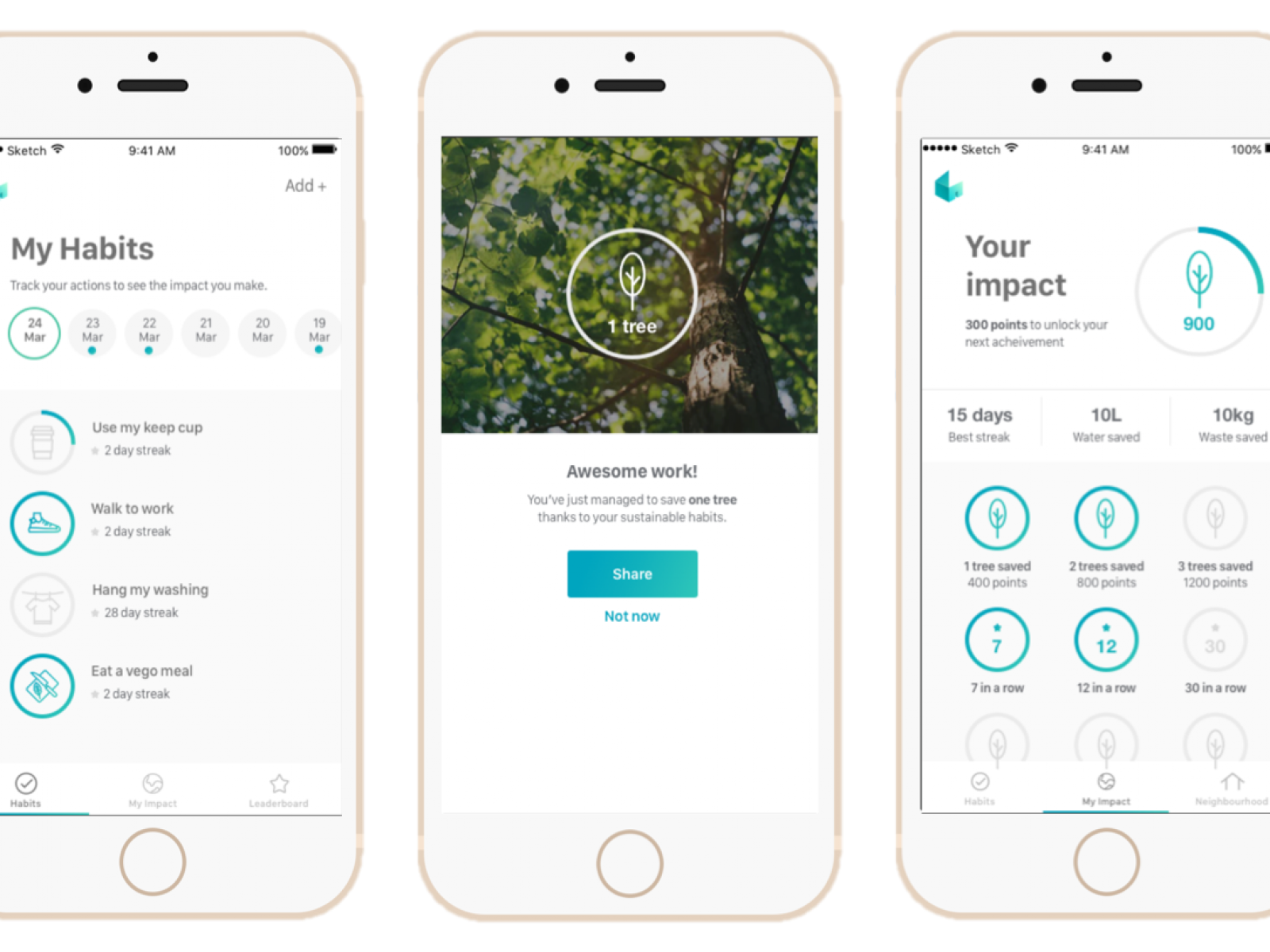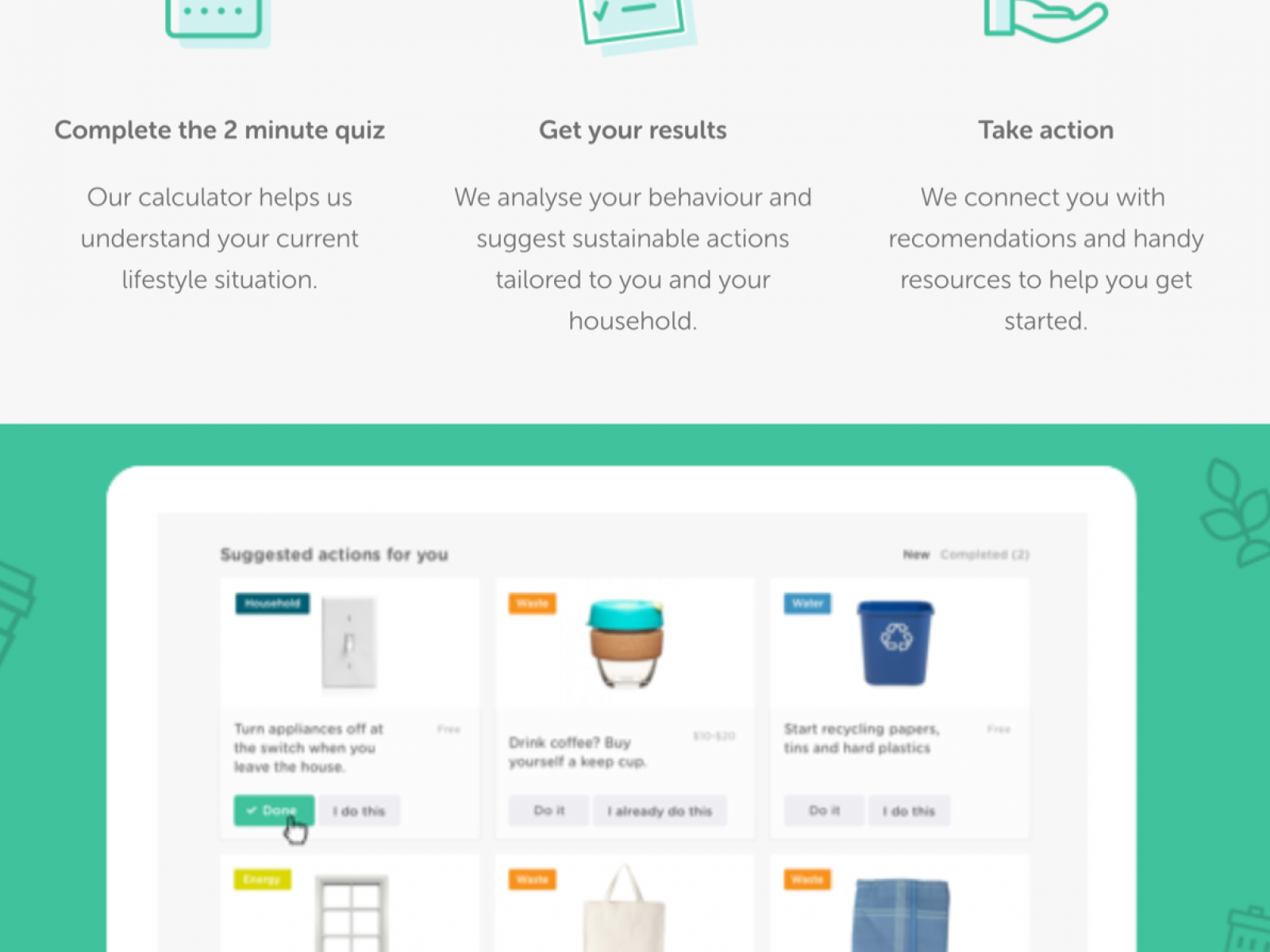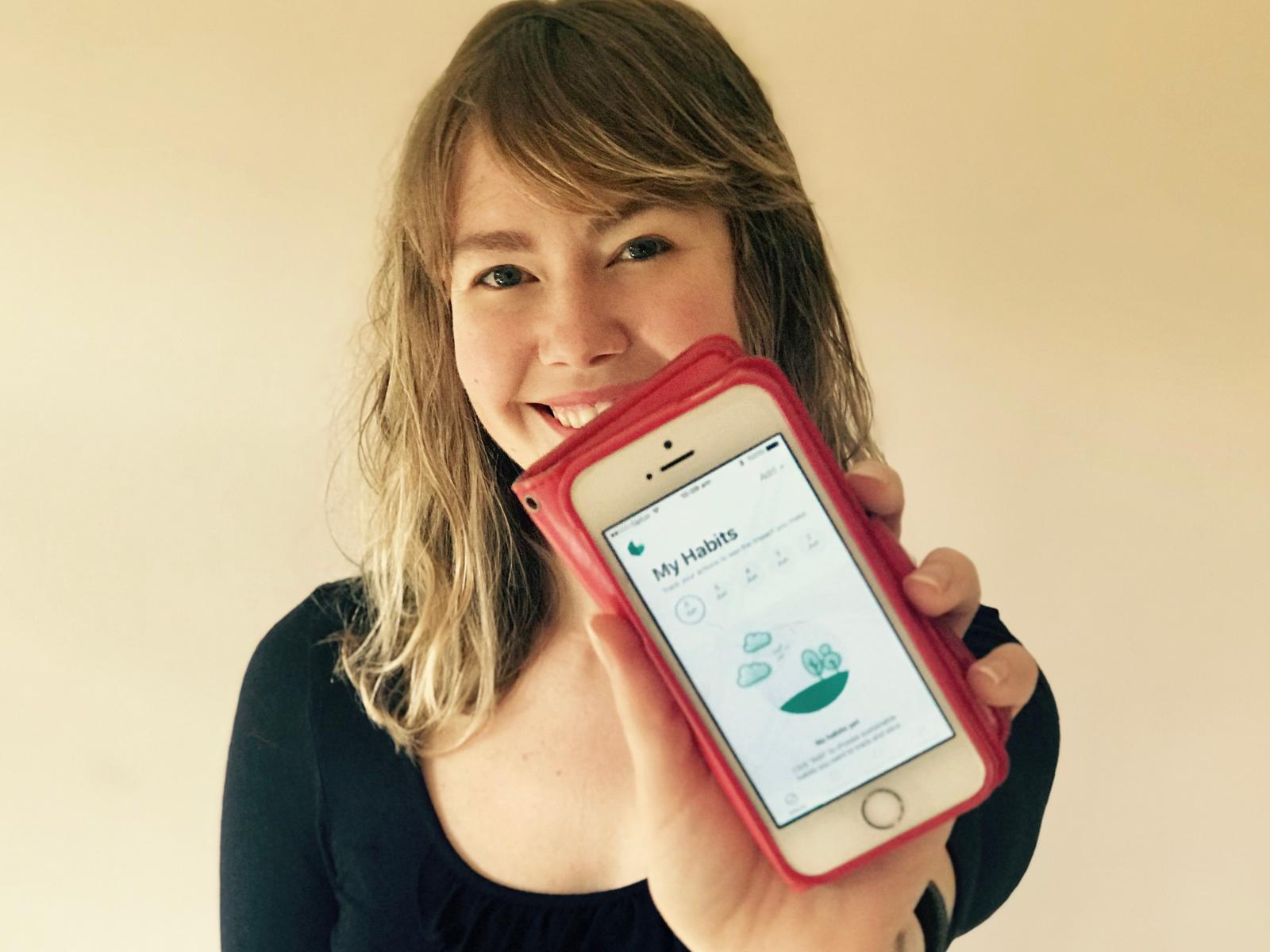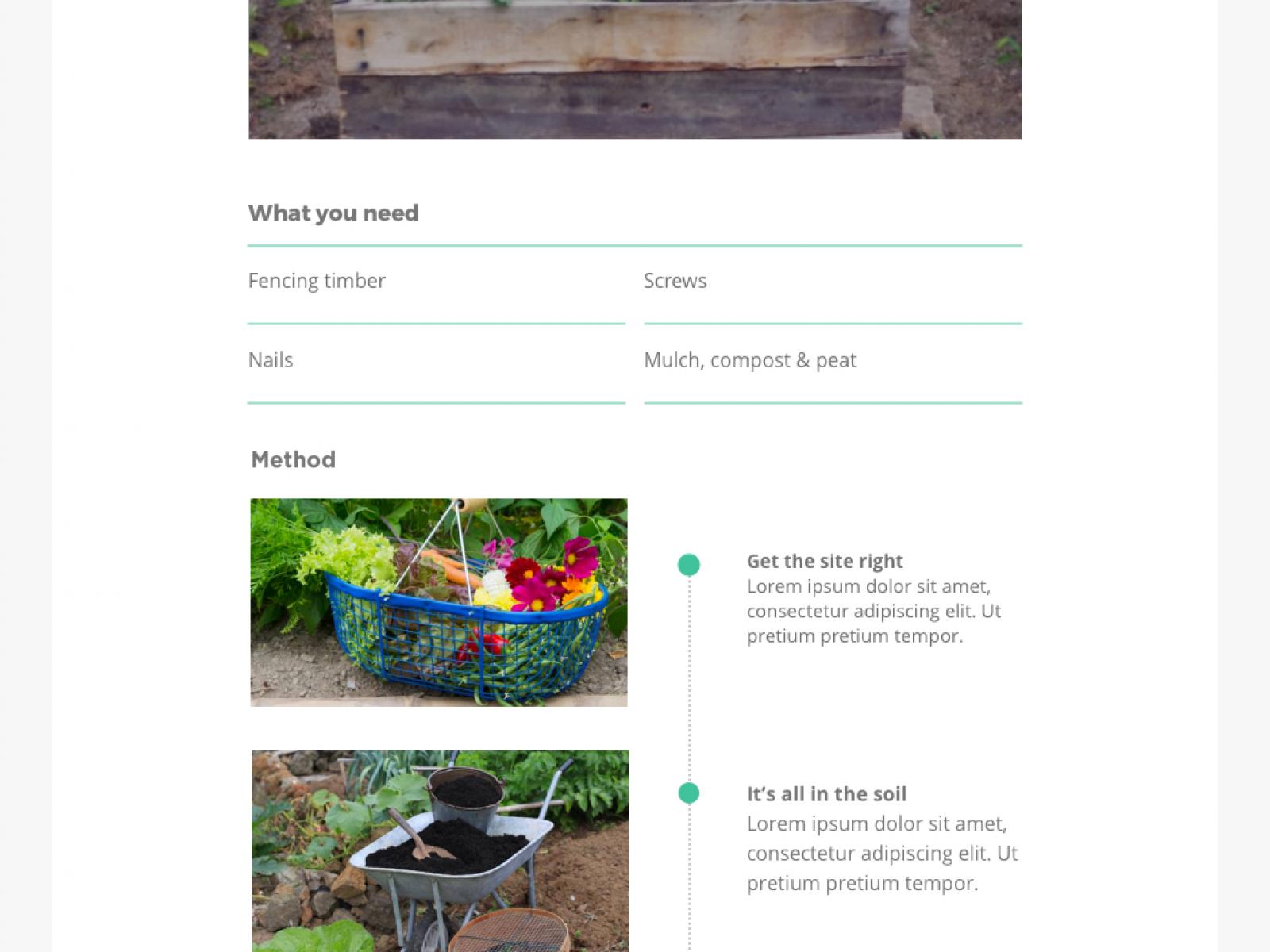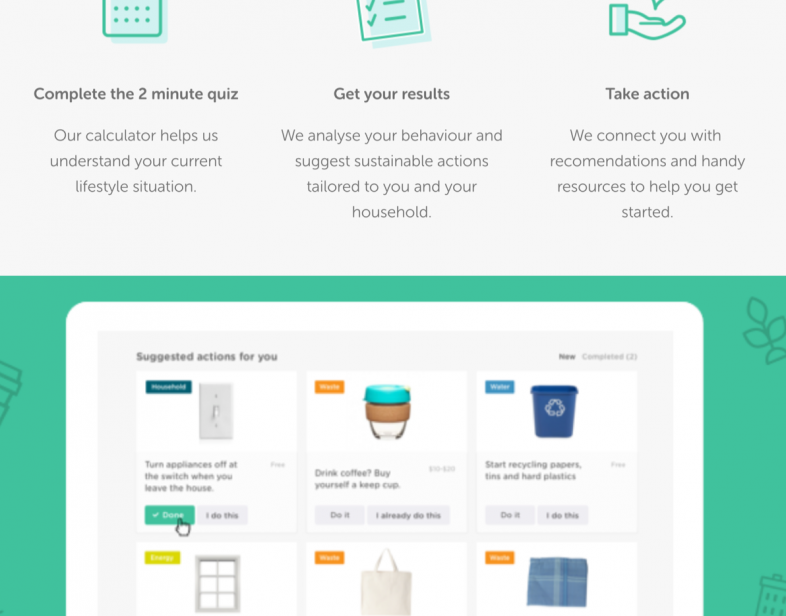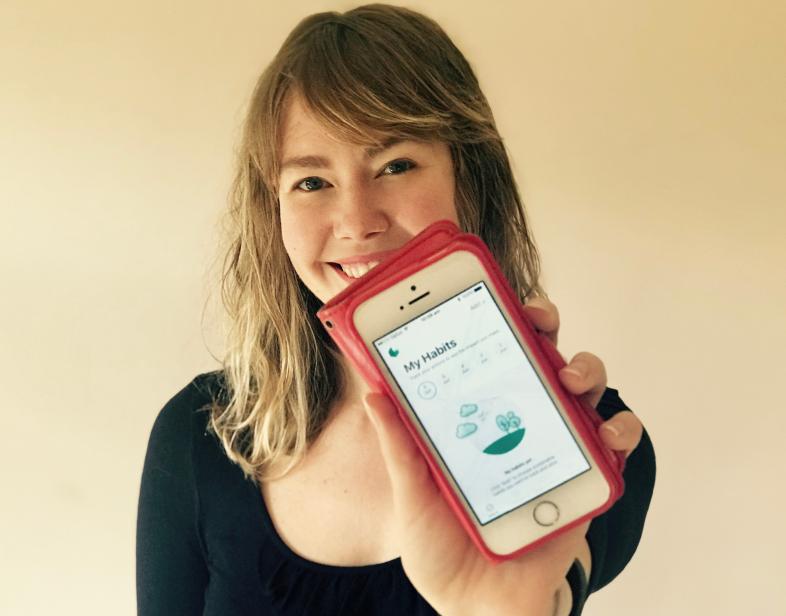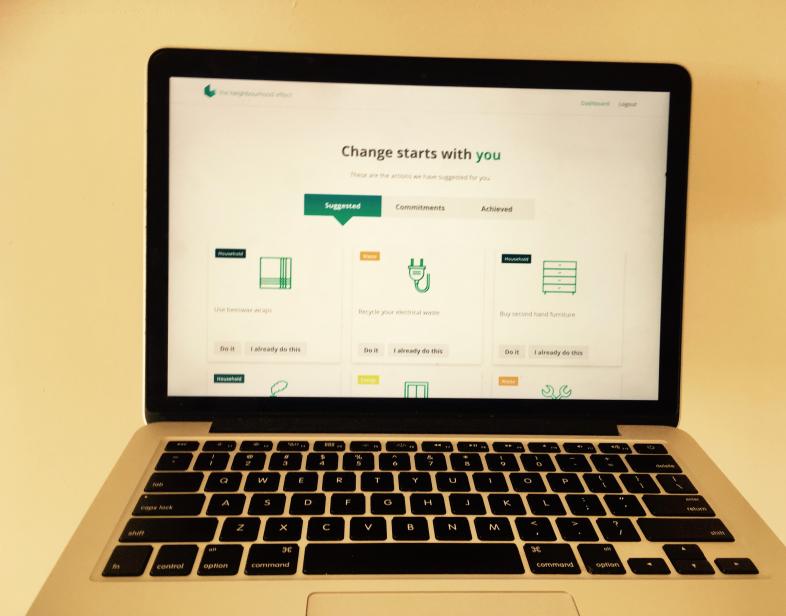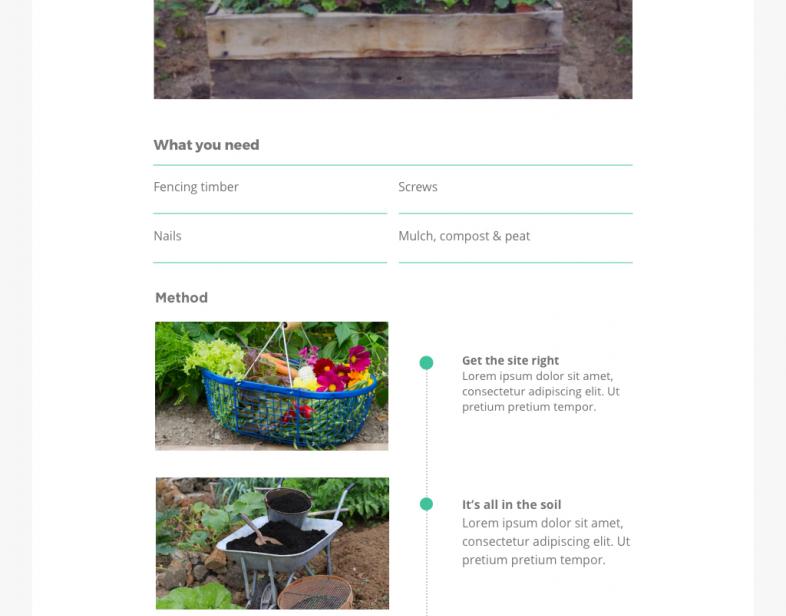An Overview Of Our Solution
Households are causing over 60% of global carbon emissions (D Ivanova et al, 2015). In Australia, where our individual carbon footprints are massive, just a couple thousand of us, acting together, can have a rapid, tangible impact. We can do this by making small changes to our day-to-day behaviour and by choosing to purchase climate-friendly products and services. We know millions of Australians care about climate change and the environment, but find changing their lifestyles difficult. Happily, behavioural economics and neuro-marketing are uncovering ways we can make it easier for people to change their habits. That's where The Neighbourhood Effect comes in. We make the transition to local, green living easy. We take behavioural science research and apply it to an app and website that make it simple and financially rewarding to reduce your carbon footprint.
- Population Impacted: 400,000
- Continent: Oceania
Last name
Organization type
Context Analysis
Millions of consumers care about climate change and environmental sustainability. We want to reduce our carbon footprints and support green businesses. But we find changing our lifestyles difficult. It’s simply too hard to find local solutions with a clear impact. We have big footprints (around 18 tonnes CO2e p.a. in Australia), from our energy usage, waste and the carbon emissions embodied in the stuff we buy. Trace greenhouse gases through supply chains, and you find Western households cause the majority of global carbon emissions. Plus, our resource inefficiency costs our households as much $8000 each a year. Through our consumer research we know millions of Australians search online, trying to find environmentally-friendly options. But most of the information we find is diffuse, text-heavy and ill-suited to our personal circumstances. We worry green living could be expensive, and we're confused about whether our choices make a difference. Nonetheless we frequently feel guilty.
Describe the technical solution you wanted the target audience to adopt
Three things underpin our approach: We know many pro-environmental behaviours are socially contagious. If you see people around you cutting down on meat, cycling to work or installing solar panels, you’re more likely to do it too. That’s The Neighbourhood Effect.
Using behavioural economics, we’re uncovering low-cost, scientifically-backed ways to help people change their behaviour.
Thirdly, the economics of sustainability have shifted. Resource efficiency is now a source of huge financial value.
We are building an app and website that make it easy, financially rewarding and social for you to adopt green habits and switch to local, climate-friendly products, services and community initiatives. Our product works by connecting you with green solutions that suit you, based on your household type, budget, location and lifestyle. We break down your environmental footprint, tailoring suggestions that are most impactful to you, covering food, waste, transport, energy and consumer goods.
Type of intervention
Describe your behavioral intervention
We operate as a kind of aggregator, matching individuals with activities that suit their level of motivation and sustainability literacy. Our pilot platform contains over 100 suggestions across waste, energy, transport, food and consumer goods. These include reducing meat and dairy intake, growing your own vegetables, reducing food waste, retro-fitting homes to improve energy efficiency, behavioural change to reduce energy consumption, facilitation of active transport to reduce fuel usage, participation in gift and sharing economies and second-hand markets to increase resource efficiency and reduce landfill waste, substituting single use items with durable reusable items, and switching from a large swathe of carbon-intensive products to eco-friendly products, including carbon neutral energy providers and financial products like fossil free superannuation and banking.
We're applying a large variety of behavioural interventions through our platform. Using lean product development and A/B testing, we'll build features based on observed results (e.g. return user rates and volume of completed actions). To date, our design has prioritised reducing decision-making friction by providing users with information they need to make a decision up-front, including the time each activity takes to complete, its environmental and financial savings, maps of where to go to locally and step-by-step video guides.
As needed, please explain the type of intervention in more detail
We incorporate implementation intentions and commitment-setting in the design of our mobile application (due for release in the ACT in Nov), where users can schedule green habits, receive in-app rewards for completion and set reminders. We are exploring the best ways to leverage social normative messages, loss aversion, and peer effects, and we are working with several different behavioural economists to run tests of various nudges and determine which approaches perform best through the platform.
Describe your implementation
For each solution, we use behavioural hacks to prompt you to act. For example, for each suggested action, we show you how long it’ll take, your environmental and financial savings, where to go locally or online to get what you need, as well as engaging how-to video content. Our design maximises convenience, cutting the time and energy required to take action. You can track your impact, and your community’s, which reinforces motivation. And we make it a game, so you can build your habits more easily over time.
We have achieved significant traction through our platform, accruing 900 subscribers in a few months, with minimal marketing. Our partnerships with local environmental groups and the media coverage we've received has allowed us to keep our marketing costs low. We were also able to raise almost $20,000 through a crowd-funding campaign in 48 hours. Our success so far is in demonstrating that there is strong demand for a platform like ours. Our next steps involve experimenting with combinations of different features and behavioural prompts to increase the effectiveness and stickiness of our platform over time. Our partnership with tech firm Blue Chilli, who are also an early stage investor, has enabled us to work with fantastic user interface designers, product managers and web and mobile developers to iterate quickly and being to build the feature set that will make use of the product and completion of suggested activities habitual, without compromising on excellent user experience and user interface design. Our biggest obstacle to date has been access to sufficient capital to allow us to test, learn and adapt our product quickly. As we are now starting to build traction and secure enterprise partnerships we're in a stronger position to seek investment and secure grant funding.
External connections
We are collaborating with all local environmental NGOs in the ACT, our flagship location, including The Australia Institute, Canberra Environment Centre, SEE-Change and Canberra Food Co-Op. We're supported by the ACT Government, through their Community Zero Emissions grants program, and the SheStarts program, an accelerator for tech startups, run by Blue Chilli. We have the support of SheStarts partners including LinkedIn, Google for Entrepreneurs and MYOB. ING supports us through their Dreamstarter program and we are sponsored by smart grid company Reposit Power. One of our advisors is Professor Bob Slonim, Research Director of the BETA team, the federal government's behavioural insights unit. One big focus for our upcoming pilots over the next 12 months is partnerships that enable us to improve the accuracy of our carbon footprint estimates. For example, working with smart meter companies and green buildings on pilots to track the changes to participants' energy consumption over time, thus reducing our reliance on self-reported data and collected observed data wherever possible (note that logging completed activities for on-screen rewards and points is known to increase engagement, and so we are likely to include this in our app's user interface).
We are also exploring potential collaborations with university partners through the Cool Climate Network and with Get Ecologic, a rigorous household energy and carbon footprint modelling tool.
Who adopted the desired behaviors and to what degree?
We are still at an early stage, having incorporated our organisation in January 2018 and released our web pilot product in May. So far we have 900 subscribers using our platform after about two months, with hundreds of users committing to suggested activities and marking them as completed. We plan on using A/B testing through our existing platform for the ACT in Australia, and via our upcoming pilots over the next 12 months, to improve the stickiness of our product and build user engagement and adoption of habits over time.
How did you impact natural resource use and greenhouse gas emissions?
As we are in pilot stage we do not have figures on the extent of greenhouse gas emission reductions from participants use of the platform to date. Our incorporation of a rigorous carbon calculator model and consumption-based carbon accounting estimates for all activities in our platform over the next few months will enable us to do this. As an indication of the potential climate impact of our initiative, with 50,000 users reducing their CO2 emissions by a quarter on average through our platform (taking the Australian average of roughly 18 tonnes as a baseline), this saves roughly the same amount of greenhouse gas as planting 5 million trees and growing them for 10 years.
What were some of the resulting co-benefits?
From using our pilot platform, community members in the ACT can experience a wide variety of co-benefits associated with living in environmentally sustainable ways. These include:
• Financial savings through greater resource efficiency, for example by connecting community members to local sharing and gift economies (such as Buy Nothing Canberra and second-hand retailers like Tiny’s Green Shed), helping them to reduce waste, grow their own vegetables and reduce electricity, gas and water consumption.
• Increasing Canberrans’ connections to each other and to their local community, and thereby improving psychological wellbeing. Recent surveys of Australians have found that we are losing our sense of community, which is taking a toll on our psychological health. Our platform, once fully developed, can help ACT residents to make meaningful connections with their neighbours, for example by encouraging users to use the social functions of the app to get in touch with others users in the same street or suburb and suggest community micro-projects and local gift or sharing economies, with step-by-step instructions on how to set up such projects (like shared neighbourhood tool sheds and veggie gardens on verges).
• Improvements to fitness and physical health (e.g. reduced risks of cardiovascular disease), by being assisted to build cycling and walking into daily and weekly routines.
• A sense of pride and empowerment from successfully reducing greenhouse gas emissions and personal ecological footprints.
• Easier access to local, environmentally-friendly businesses that offer low-emissions products. By helping community members exercise consumer choice, the app will support the growth of these businesses.
Sustainability
We white label our product and charge a per user subscription. Our upcoming pilots will explore different pricing and conversion models. We offer this to green businesses and organisations who want to build brand loyalty, reduce emissions and/or reduce waste and energy costs. Our enterprise subscriptions appeal to a range of different groups including green property developers, student or community housing, green businesses that want to improve user engagement, and any organisations that want to reduce their users carbon emissions or associated energy and waste costs.
Return on investment
We launched our first web pilot in May, so our results are preliminary. We now have 900 people using our web platform with almost 600 sign ups during our 4 week pilot period. Through our partnership with SheStarts, we've built our web product without up-front capital investment. We secured $25,000 in funding from the ACT government and raised another $30,000 from the community through a month-long Kickstarter in June. We'lll use these funds to further develop our platform's features and to incorporate a rigorous carbon calculator model and how-to video content. User testing shows these features are most likely to increase user engagement. For our pilot, our cost of acquiring users was roughly 30 cents per user, based on our marketing spend.
How could we successfully replicate this solution elsewhere?
The Neighbourhood Effect's purpose is to create a community-driven model for sustainable behaviour change that we can replicate in cities and towns with high per capita emissions. There are some great organisations working in this area, including 1 Million Women & Cleanbit Systems. Our approach differs in that we're hyper-local & community-focused. There are patchy examples of this model being used elsewhere, but not at scale, nor in a way that's successfully tech-enabled. An analogous approach is Welltok's platform, which successfully reduces claims on health insurance due to behavioural nudges helping clients change their diet and exercise. We're raising $450,000 in Q42018 to hire a data scientist and front end developer and cover development, marketing, legal & accounting costs. We would use the $25,000 prize to develop a feature that allows community members to set up and participate in gift and sharing economies in their neighbourhoods. We know there's great demand for this.
